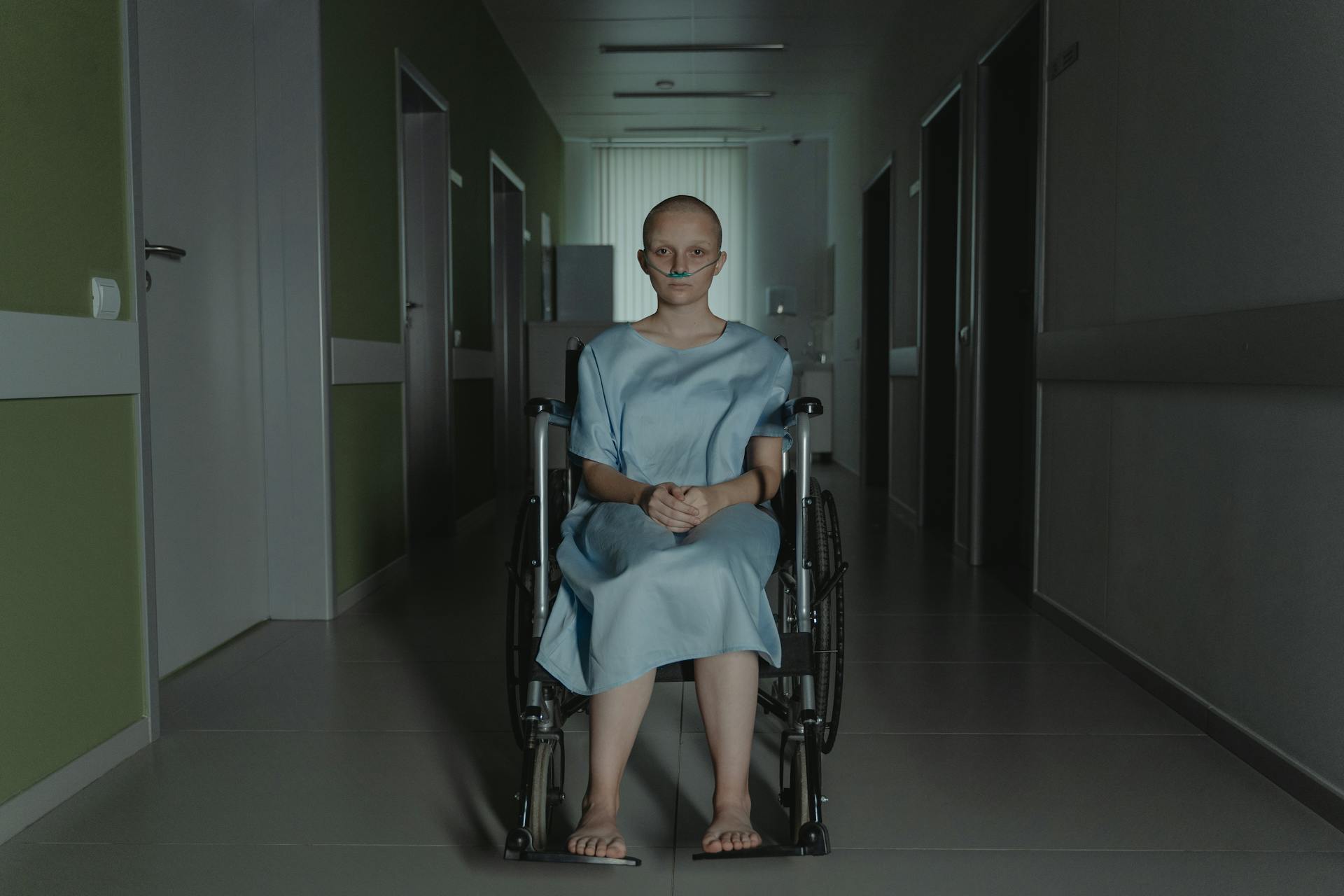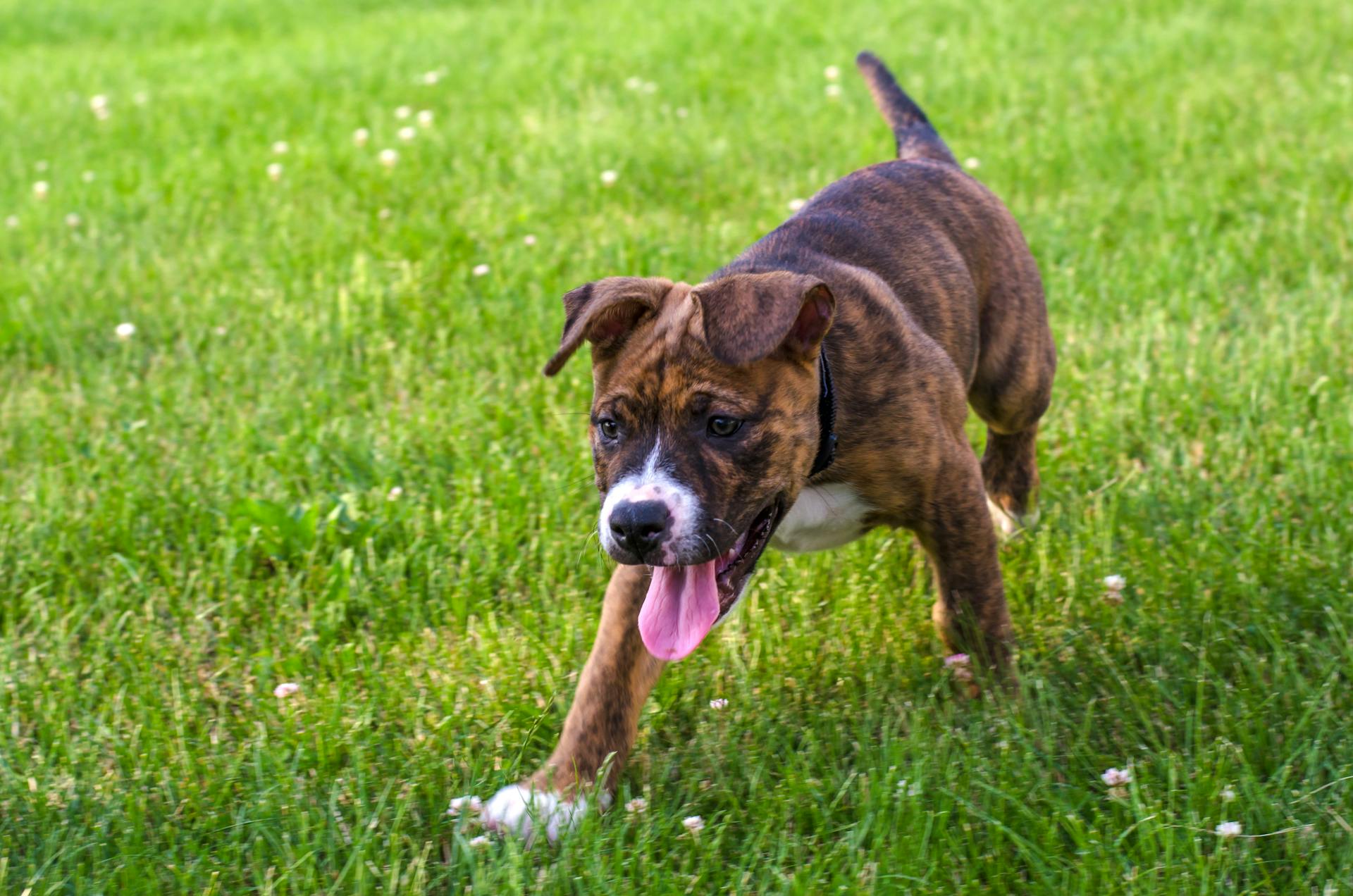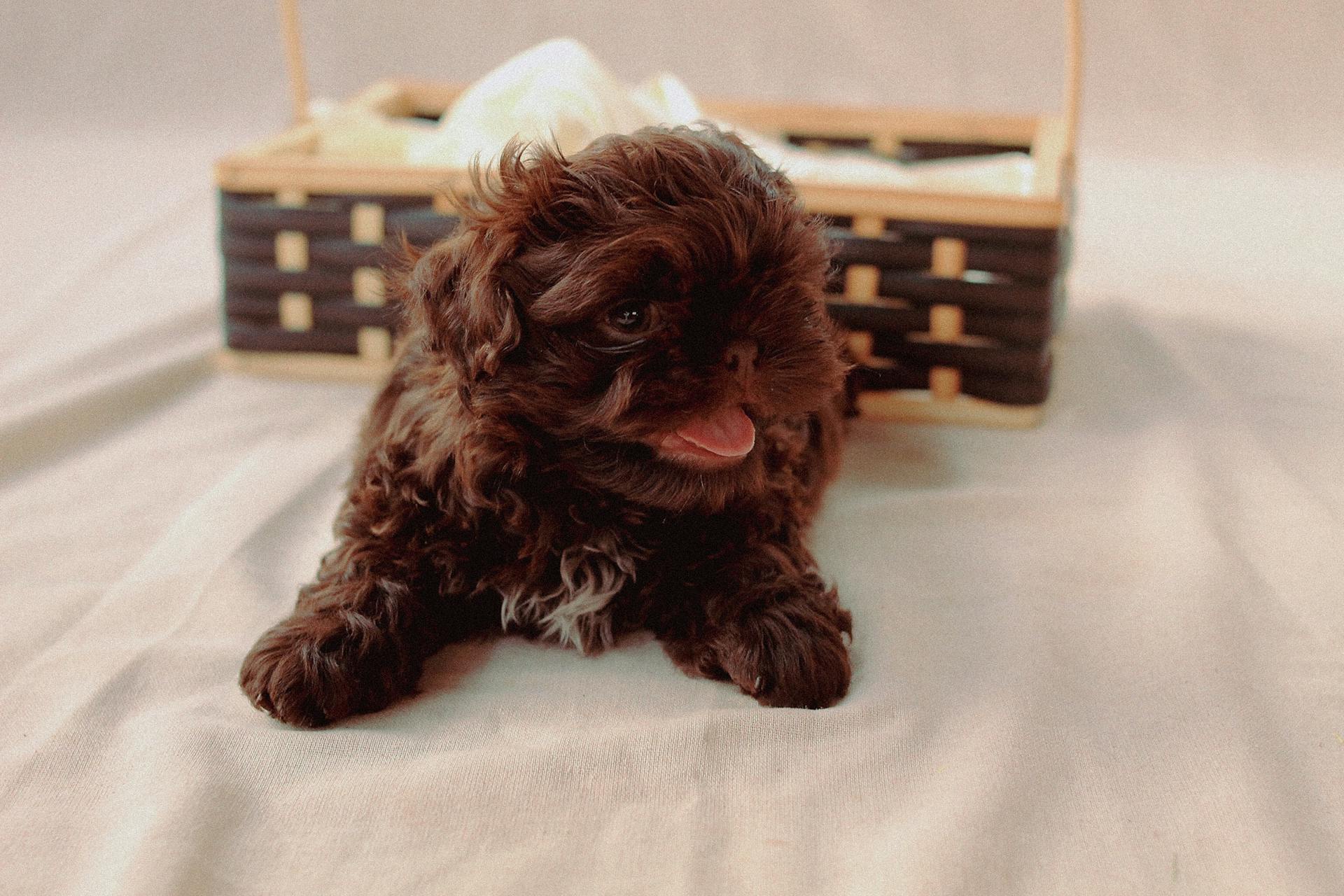
If you're a Shih Tzu owner, you might have noticed that your furry friend is losing hair. Alopecia in Shih Tzus is a common condition that affects many of these adorable dogs.
The exact cause of alopecia in Shih Tzus is still unknown, but it's often linked to genetics, hormonal imbalances, and allergies.
What Is Alopecia
Alopecia is a common condition in dogs, and it's not just about shedding - it's about actual hair loss. Alopecia refers to either thinning hair or spots of hair loss, also known as bald spots.
It's worth noting that alopecia can affect all breeds and genders at any stage of their life. This means that your Shih Tzu, regardless of age or background, can be susceptible to alopecia.
Alopecia can display as either partial or complete hair loss, and it can also affect your dog's skin, endocrine, lymphatic, and immune systems. This is why it's essential to visit the vet to find the root of the problem.
Some breeds are more prone to alopecia, such as Pomeranians, Chihuahuas, and Yorkshire terriers, but it's not exclusive to these breeds.
Consider reading: Shih Tzu No Hair
Causes of Baldness
Alopecia in Shih Tzus can be caused by a variety of factors, including ectoparasites like fleas, lice, and mange mites such as Demodex or Sarcoptes.
Skin infections, allergies, and autoimmune disorders are also common causes of baldness in Shih Tzus.
Some Shih Tzus may experience seasonal alopecia, a condition where they lose their hair during certain times of the year, which can take around 6-12 months to regrow.
Here are some of the most common causes of baldness in Shih Tzus:
- Ectoparasites (fleas, lice, mosquitoes, mange mites such as Demodex or Sarcoptes)
- Autoimmune disorders
- Seasonal alopecia
These conditions can be identified by a veterinarian through a physical examination and diagnostic tests.
Pattern Baldness
Pattern baldness is a common issue in dogs, affecting breeds like Pomeranians and Dachshunds, as well as short-coated breeds like Boxers and Chihuahuas.
Females tend to be more predisposed to this issue, and it often starts around the age of 6 months.
This pattern of baldness can progress to near baldness over the next year, with specific areas of fur loss occurring over and behind ears, on the legs, and on the belly.
Causes
Causes of baldness can be quite varied, and it's essential to understand the different factors that contribute to it.
Fleas, lice, mosquitoes, and certain types of mites like Demodex or Sarcoptes can cause hair loss in dogs.
Skin infections, whether bacterial or fungal, can also lead to baldness.
Allergies, including those triggered by insect bites or environmental factors, can cause hair loss.
Anxiety-related issues or underlying pain can cause dogs to self-traumatize, leading to hair loss.
Autoimmune disorders and endocrine diseases, such as hyperadrenocorticism or hypothyroidism, can also cause baldness.
Certain genetic conditions, like Alopecia X or color dilution alopecia, can predispose dogs to hair loss.
Nutritional deficiencies or unbalanced diets can also lead to hair loss in dogs.
Here are some specific causes of baldness in dogs:
- Mange, caused by the mite 'Demodex'
- Disruption in hair follicle growth due to trauma, infection, or immune disease
- Hair follicle inflammation
- Allergic reactions to food or environmental items
- Parasites and fleas
- Bacterial skin infections or hot spots
- Ringworm
- Overgrooming due to stress or pain
- Seasonal alopecia, common in breeds like Boxers, Bulldogs, Dobermans, and Staffordshire Bull Terriers
- Inherited conditions, if a dog's parents suffered from alopecia
Symptoms and Diagnosis
Alopecia in Shih Tzus can manifest in various ways, including mild to severe scratching, red, inflamed, or thickened skin, and even open wounds due to excessive scratching.
Some dogs may display no scratching at all, making diagnosis more challenging. Skin with papules, pustules, plaques, or hives can also be present.
The symptoms of alopecia in Shih Tzus can be accompanied by other signs such as a brittle or dry coat, shedding more than usual, bald patches, crusting, inflammation, or red patches around the area of hair loss.
Here are some possible causes of alopecia in Shih Tzus:
- Mites and fungal elements such as ringworm
- Bacterial, fungal, or yeast infections
- Parasites like fleas, ticks, and lice
- Genetics or an auto-immune disorder
- An inadequate diet or food allergies
Your veterinarian will perform a thorough physical examination, taking into account your dog's age, breed, sex, health status, and prior medical history. This will help determine the best course of action for diagnosing the cause of alopecia in your Shih Tzu.
Symptoms
Losing hair can be a symptom of alopecia in dogs, but it's not the only sign to look out for. If your dog is experiencing hair loss, it's essential to pay attention to other symptoms that may accompany it.
Mild to severe scratching is a common symptom of alopecia in dogs, but some dogs may not scratch at all. Skin can become red, inflamed, thickened, or even malodorous, and may develop papules, pustules, plaques, or hives.
Skin conditions like ringworm can cause hair loss, and the affected skin may be oozing or bleeding. If your dog has a skin condition, it's not uncommon for them to cause trauma to their skin by excessive scratching, leading to open wounds.
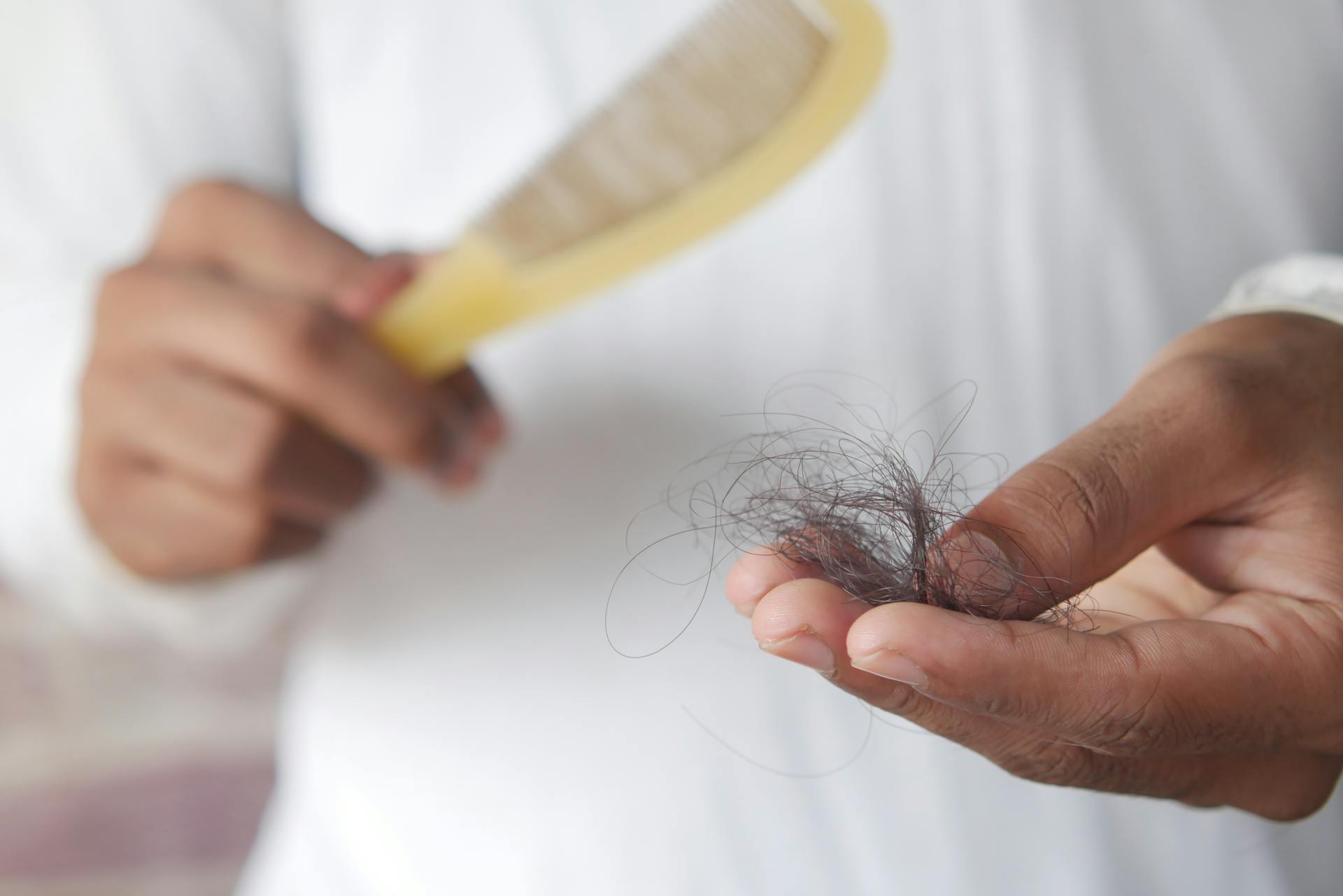
Brittle or dry coat, shedding more than usual, and bald patches are all signs that your dog may be experiencing alopecia. You may also notice crusting, inflammation, or red patches around the area of hair loss, or scaly skin.
Dandruff, itchy skin, and overgrooming can also be symptoms of alopecia in dogs. In some cases, patches of dark skin may appear.
Here are some common symptoms of alopecia in dogs:
- Mild to severe scratching
- Red, inflamed, or malodorous skin
- Papules, pustules, plaques, or hives
- Brittle or dry coat
- Shedding more than usual
- Bald patches
- Crusting, inflammation, or red patches
- Scaly skin
- Dandruff
- Itchy skin
- Overgrooming
- Patches of dark skin
Diagnosing
Diagnosing alopecia in dogs requires a thorough physical exam by your veterinarian, who will take multiple factors into consideration before determining what diagnostics are appropriate in your dog's case.
Your vet will examine your dog's hair follicles for signs of damage, and may also perform blood tests or biopsies to confirm or eliminate medical causes. They'll check for bacterial, fungal, or yeast infections, and rule out parasites through a skin scraping.
To diagnose the cause of alopecia, your vet will ask you a series of questions about your dog's history, including diet, number of pets in the home, degree of pruritus, past treatments, and environmental factors.
Some signs that may indicate alopecia in your dog include brittle or dry coat, shedding more than usual, bald patches, crusting, inflammation or red patches, scaly skin, dandruff, itchy skin, overgrooming, and patches of dark skin.
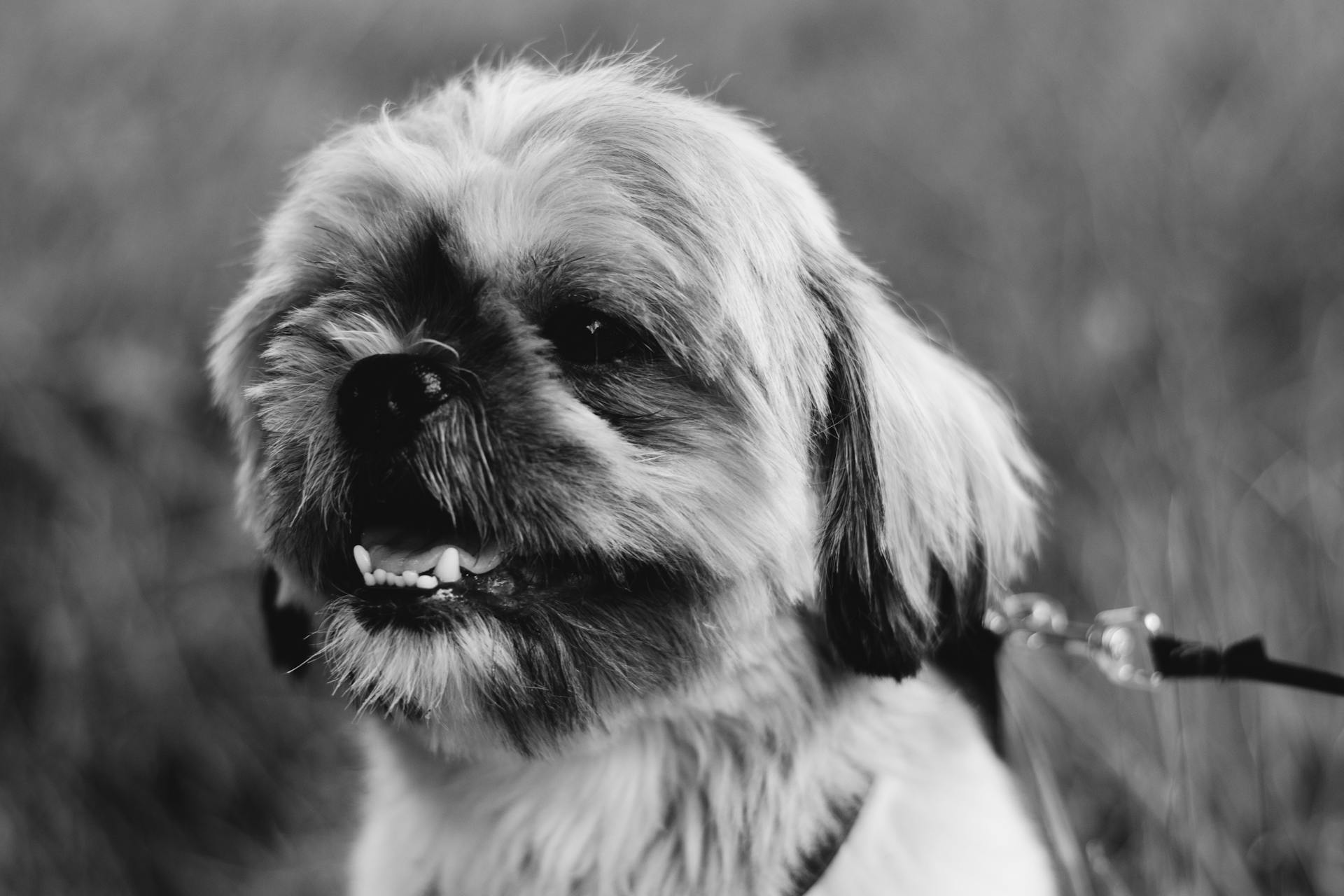
Your vet will also check for evidence of fleas or flea "dirt", ticks, or saliva-stained areas, and note any unusual odors, such as yeasty feet or ears with unique smells.
Here are some common causes of alopecia in dogs:
- Heredity or hormonal issues
- Parasitic infestations, such as fleas, lice, mosquitoes, or mange mites
- Insect bites or stings
- Inadequate diet or food allergies
- Outdoor, dirty, hot, or moist environments that can lead to fungal or bacterial infections
- Endocrine diseases, such as hypothyroidism or Cushing's disease
- Reactions to rabies vaccines, steroid injections, or other medications
- Cancer, chemical exposure, burns, or normal aging
Treatment and Management
Treatment for alopecia in Shih Tzus can be challenging, but with the right approach, you can help your furry friend feel better.
The first step is to identify the underlying cause of the hair loss. This may involve food trials, which involve feeding your dog a special diet to see if their symptoms improve.
Medications such as Apoquel, Atopica, or Cytopoint injections may be prescribed to control itching, inflammation, or allergies. Topical therapy, including medicated shampoos, sprays, ointments, or dips, can also be used to treat skin conditions.
Regular flea control is crucial in managing alopecia, as fleas can cause skin irritation and hair loss. Keeping your dog clean and well-groomed can also help prevent the progression of symptoms.
If your Shih Tzu starts to experience alopecia again in the future, it's essential to see a veterinarian quickly to stop the progression of symptoms.
Here are some common treatment options for alopecia in dogs:
- Food trials
- Medications (antibiotics, antifungals, steroids, antihistamines, anti-parasiticides, anti-inflammatory or anti-pruritic medications)
- Topical therapy (medicated shampoos, sprays, ointments, or dips)
- Surgical removal
Treatment
Treatment for dog alopecia can be approached in several ways, depending on the underlying cause of hair loss. The key is to get a proper diagnosis from your vet to determine the best course of action.
Food trials can be an effective way to identify and address any food allergies or sensitivities that may be contributing to your dog's hair loss. Your vet may recommend a hypoallergenic diet or a gradual introduction of new foods to identify any adverse reactions.
Medications such as antibiotics, antifungals, steroids, antihistamines, anti-parasiticides, anti-inflammatory or anti-pruritic medications like Apoquel, Atopica, or Cytopoint injections may be prescribed to treat underlying skin conditions or allergies.
Topical therapy, including medicated shampoos, sprays, ointments, or dips, can be used to address skin conditions such as ringworm or eczema.
See what others are reading: How to Identify a Shih Tzu
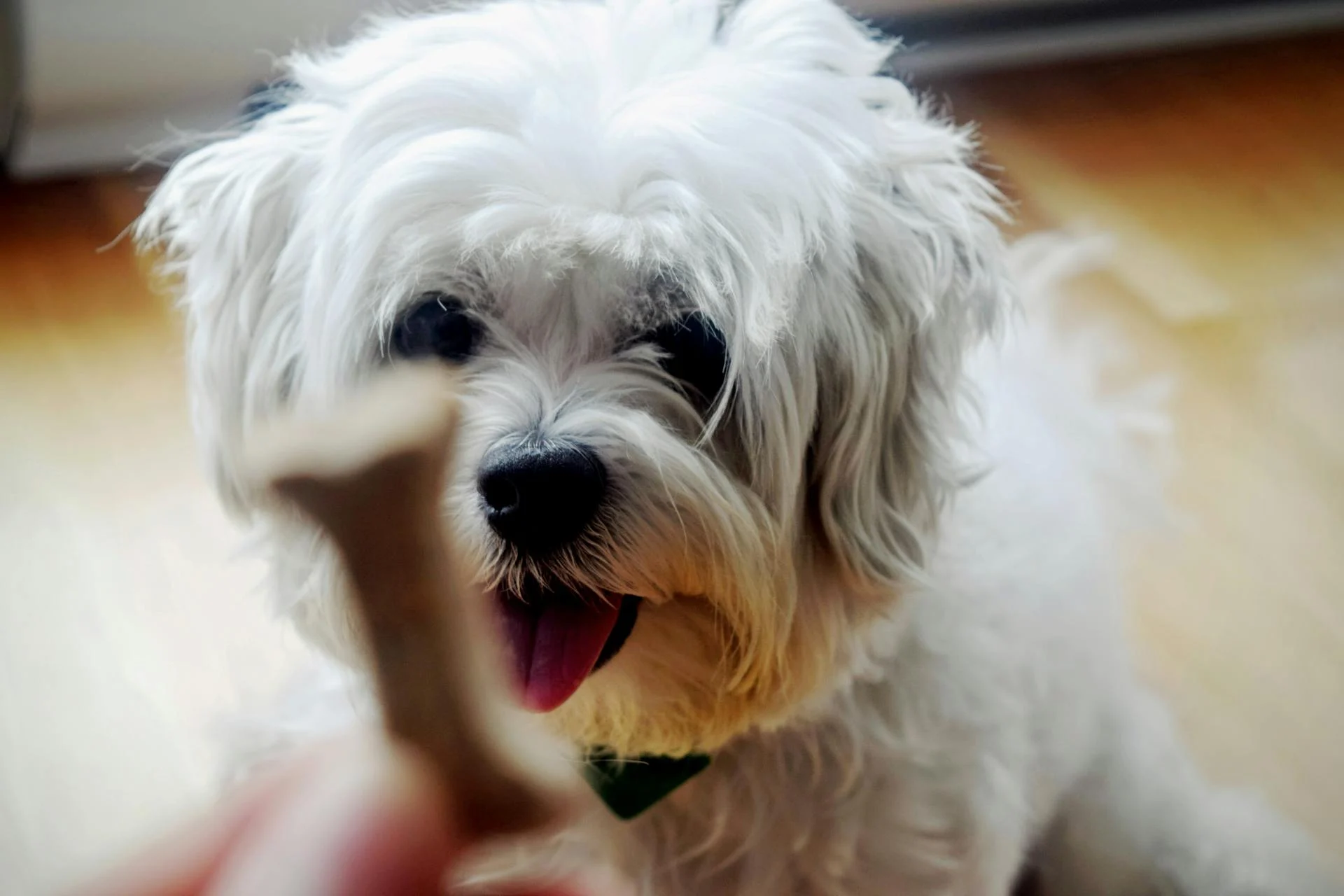
Surgical removal may be necessary in some cases, but this is usually a last resort and should be discussed with your vet in detail.
Here are some common treatment options for dog alopecia:
- Food trials
- Medications (antibiotics, antifungals, steroids, antihistamines, anti-parasiticides, anti-inflammatory or anti-pruritic medications)
- Topical therapy (medicated shampoos, sprays, ointments, or dips)
- Surgical removal
- Other (may include anti-fungal treatments for ringworm)
It's essential to work closely with your vet to determine the best treatment plan for your dog, as some causes of hair loss can be challenging to treat. Regular flea control treatments should also be a priority to prevent any secondary skin conditions.
Recovery and Management
Identifying the underlying cause of alopecia is crucial in preventing future episodes. If the cause is related to fleas, using effective, regular flea control is essential.
Keeping your dog clean and well-groomed can help manage alopecia symptoms. This includes regular bathing and brushing to prevent matting and tangling of their fur.
Avoiding known allergens is also vital in managing alopecia. This may involve identifying and removing allergens from your dog's environment.
Seeing your veterinarian quickly if your dog starts to show alopecia symptoms is crucial in stopping the progression of symptoms.
Breed-Specific and Other Factors
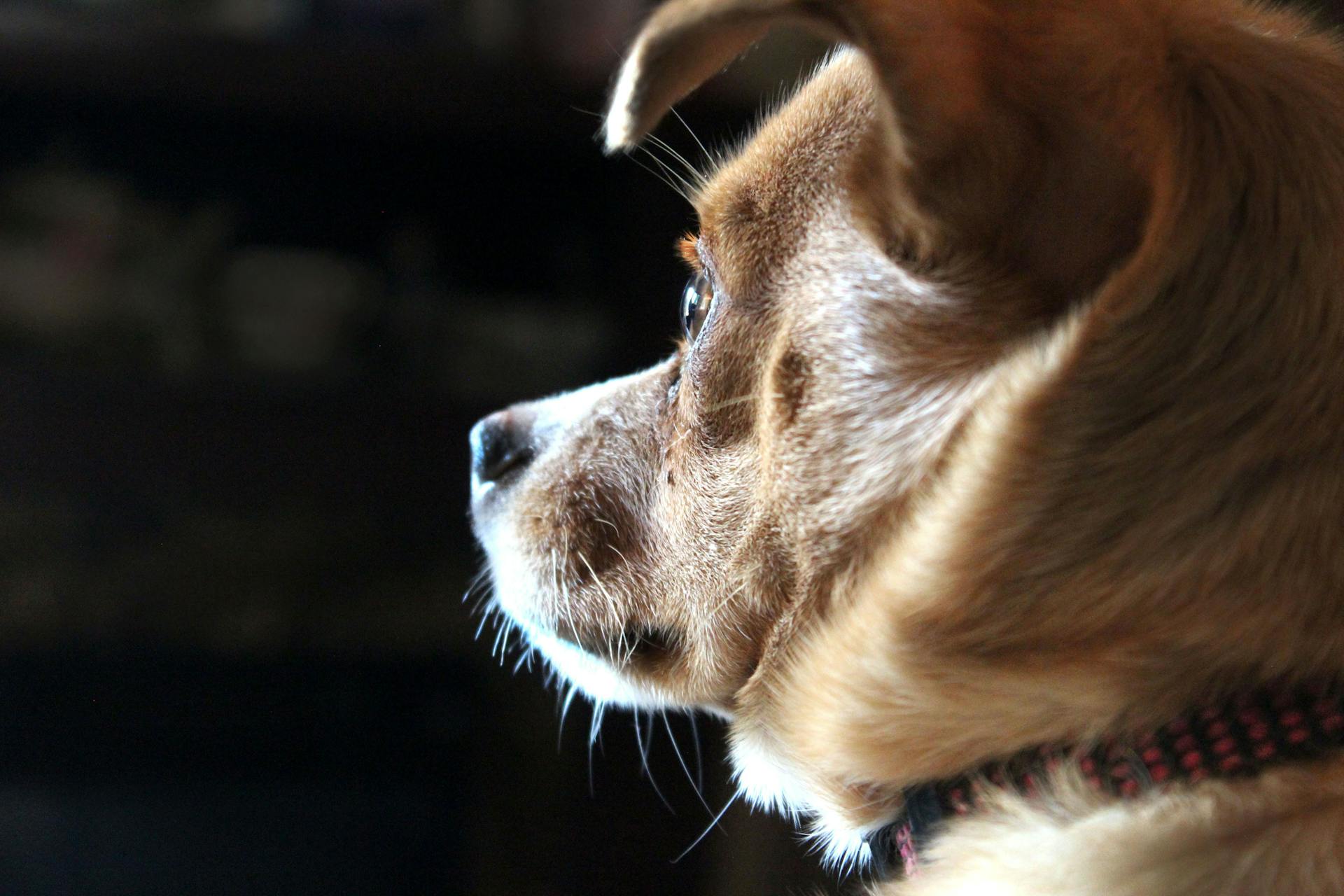
Some breeds are more prone to alopecia, with Pomeranians and Nordic breeds being the most susceptible to Alopecia X. This condition can cause hair loss, but the exact cause is still unknown.
Genetic predisposition can play a role in alopecia, with certain breeds being more prone to it. For example, Golden Retrievers, Doberman Pinschers, Irish Setters, Dachshunds, Boxers, and Cocker Spaniels are more likely to develop hypothyroidism, which can cause hair loss.
Other factors that can contribute to alopecia in Shih Tzus include ectoparasites, skin infections, allergies, and autoimmune disorders. These conditions can be caused by various factors, including poor nutrition, environmental conditions, and exposure to chemicals.
Here are some breeds that may be more prone to alopecia:
Other Bald Spot Causes
Some breeds are more prone to alopecia than others. For example, Boxers, Bulldogs, Dobermans, and Staffordshire Bull Terriers are more likely to experience seasonal alopecia, which can take up to a year to regrow.
Certain breeds, such as Alaskan malamutes, Siberian huskies, and keeshonds, can develop post-clipping alopecia after being clipped for surgery.
Golden retrievers, Doberman pinschers, Irish setters, dachshunds, boxers, and cocker spaniels are at higher risk for hypothyroidism, which can cause hair loss due to a lack of thyroxine.
Nutritional deficiencies, such as starvation or an unbalanced diet, can also lead to hair loss in dogs.
Here are some examples of breeds that may be more susceptible to hair loss due to various factors:
- Boxers, Bulldogs, Dobermans, and Staffordshire Bull Terriers: seasonal alopecia
- Alaskan malamutes, Siberian huskies, and keeshonds: post-clipping alopecia
- Golden retrievers, Doberman pinschers, Irish setters, dachshunds, boxers, and cocker spaniels: hypothyroidism
Is Breed-Specific?
Alopecia X can impact any breed at any time, but some breeds are more prone to the condition. Pomeranians and other Nordic breeds seem to be the most susceptible to this issue.
We don't yet know if this is a result of genetics, breeding practices, diet, endocrine disorders, or other issues.
Alopecia X can manifest in various patterns of hair loss depending on the form of the condition.
Canine Connection
Alopecia, also known as abnormal hair loss or baldness, is a common condition that affects dogs, with a pattern to the baldness that will either spread out or appear symmetrical.
Some alopecia flare-ups are temporary and improve with treatment, while others are permanent.
Dogs with alopecia may experience itching, which can lead to excessive licking, scratching, and shedding.
Hair loss along the dog's side and thighs is a common sign of alopecia.
Darkened skin or a change in skin color can also occur in dogs with alopecia.
Dry, crusty skin and red, inflamed skin that may appear thickened or bleeding are other signs of the condition.
Dandruff or flaky skin, as well as red spots on the skin with or without hives or pustules, can also be present in dogs with alopecia.
If left untreated, alopecia can cause stress and anxiety in dogs, leading to constant scratching and potential trauma to the skin.
Frequently Asked Questions
What triggers dog alopecia?
Dog alopecia can be triggered by various conditions, including flea infestations, skin allergies, and hormonal imbalances. Consult a vet if you notice your dog losing fur to determine the underlying cause and get proper treatment.
Can dogs hair grow back after alopecia?
Yes, in some cases, dogs' hair can regrow spontaneously or with treatment, such as glucocorticoids or cyclosporine. However, the likelihood and effectiveness of hair regrowth vary depending on the underlying cause of the alopecia.
At what age do dogs get alopecia?
Dogs typically develop Seasonal Flank Alopecia between 1 to 6 years old. This age range is when the condition often first appears and can continue throughout the dog's life.
Sources
- https://www.akc.org/expert-advice/health/alopecia-dogs-dog-losing-hair/
- https://www.petmd.com/dog/conditions/skin/c_dg_alopecia
- https://www.purina.co.uk/articles/dogs/health/skin-fur-ears/alopecia-on-dogs
- https://www.dermagic.com/blogs/dermagic/the-types-of-alopecia-x-and-breeds-that-experience-it
- https://www.webmd.com/pets/dogs/dog-bald-spot
Featured Images: pexels.com
